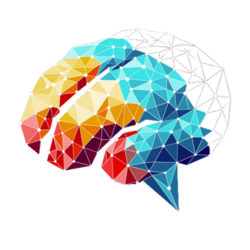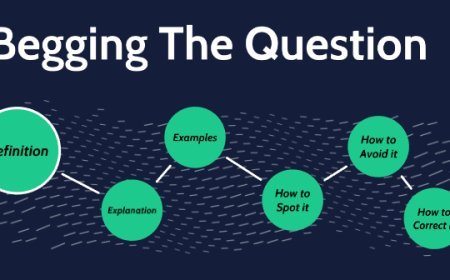Verbal, Numerical and Spatial Intelligence
The human mind, a marvel of biological engineering, possesses a fascinating array of cognitive strengths that allow us to perceive, process, and interact with the world in myriad ways. Often grouped under the umbrella of general intelligence, a deeper dive reveals specialized capacities that shape our aptitudes and preferences.

Among the most prominent of general intelligence are verbal intelligence, numerical intelligence, and spatial intelligence – distinct cognitive strengths that define how we interpret information, solve problems, and even communicate. Understanding these inherent abilities, and the subtle wordings that often accompany them, provides a richer appreciation for the diversity of human intellect.
Verbal Intelligence: The Power of Wordings and Communication
Verbal intelligence is the cornerstone of communication and abstract thought. It encompasses the ability to understand and use language effectively, both written and spoken. Individuals with strong verbal intelligence possess a keen sensitivity to the nuances of wordings, grammar, syntax, and rhetoric. They excel in tasks such as reading comprehension, writing, public speaking, and engaging in eloquent discussions.
Think of a gifted orator who can captivate an audience with their carefully chosen wordings, or a prolific writer who crafts intricate narratives that resonate deeply. These are hallmarks of high verbal intelligence. Such individuals often have extensive vocabularies, a natural flair for expressing complex ideas with clarity, and an innate ability to discern the subtle meanings embedded within different wordings. They might gravitate towards professions like journalism, law, teaching, literature, or translation, where the mastery of language is paramount. Their cognitive strength lies in their capacity to decode and encode information through linguistic frameworks, making sense of the world through narratives, arguments, and poetic expression. They are the architects of ideas, building bridges of understanding with precisely articulated wordings.
Numerical Intelligence: The Logic of Figures and Formulas
In contrast, numerical intelligence, often referred to as logical-mathematical intelligence, is the capacity to reason with numbers, quantities, and logical relationships. Individuals strong in this area thrive on patterns, sequences, and abstract concepts that can be expressed through mathematical symbols. They excel at problem-solving that requires calculation, statistical analysis, logical deduction, and the manipulation of abstract mathematical principles.
Consider a brilliant mathematician who can effortlessly solve complex equations, or an astute financial analyst who can interpret vast datasets to predict market trends. These individuals demonstrate robust numerical intelligence. They are often drawn to the inherent order and predictability of numbers, finding satisfaction in discovering underlying rules and applying them to diverse situations. Their wordings often reflect this precision, perhaps using terms like "quantifiable," "variables," and "algorithms" with ease. Fields such as engineering, computer science, finance, accounting, and scientific research are natural fits for those with strong numerical abilities. Their cognitive strength lies in their capacity to see the world through a lens of logical precision and quantitative analysis, finding solutions within the structured realm of numbers and formulas.
Spatial Intelligence: Visualizing the World in Three Dimensions
Spatial intelligence is the ability to perceive, manipulate, and reason about objects in three-dimensional space. This cognitive strength involves mental imagery, navigation, and the understanding of how things fit together. Individuals with high spatial intelligence can easily visualize objects from different perspectives, mentally rotate them, and understand complex spatial relationships.
Imagine an architect who can envision a building before it's constructed, or a sculptor who can see the finished form within a block of stone. These are prime examples of strong spatial intelligence at work. They might excel at tasks involving maps, puzzles, design, or mechanical assembly. Their cognitive strength allows them to mentally construct and deconstruct objects, understand schematics, and navigate unfamiliar environments with ease. While their wordings might not be as overtly descriptive as those with high verbal intelligence, their internal mental imagery is incredibly rich. Professions like architecture, engineering, graphic design, piloting, and surgery often attract individuals with strong spatial reasoning abilities, as these fields demand a keen understanding of form, function, and orientation in space.
The Interplay and Balance of Strengths
It's crucial to understand that while these intelligences are distinct, they rarely operate in isolation. In reality, most individuals possess a unique blend of these cognitive strengths, with varying degrees of proficiency in each. A successful engineer, for instance, might rely heavily on numerical and spatial intelligence to design a bridge, but also require strong verbal intelligence to communicate their plans effectively to a team. Similarly, a skilled writer (high verbal intelligence) might also possess a good sense of spatial awareness when describing settings or character movements.
Furthermore, these cognitive strengths can be developed and refined through practice and focused learning. While some individuals may have a natural predisposition towards one type of intelligence, dedicated effort can significantly enhance abilities in other areas. Recognizing our dominant cognitive strengths, and appreciating the diverse wordings and thinking styles they entail, can empower us to pursue careers and activities that align with our natural talents, while also encouraging us to stretch and grow in areas where we may be less proficient. In a world that increasingly values diverse skill sets, understanding the intricate toolkit of the human mind is more valuable than ever.
What's Your Reaction?
 Like
0
Like
0
 Dislike
0
Dislike
0
 Love
0
Love
0
 Funny
0
Funny
0
 Angry
0
Angry
0
 Sad
0
Sad
0
 Wow
0
Wow
0





















